Gorgeous Black Swan movie posters
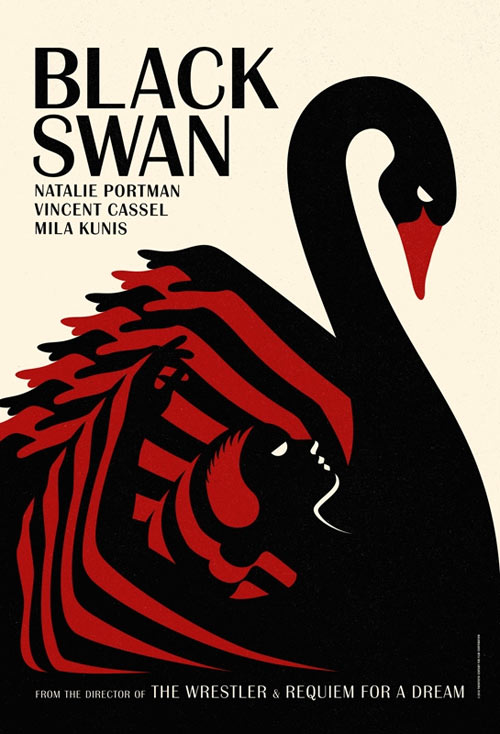
That one is the best of the lot, but the others are great as well. (via matt)



This site is made possible by member support. 💞
Big thanks to Arcustech for hosting the site and offering amazing tech support.
When you buy through links on kottke.org, I may earn an affiliate commission. Thanks for supporting the site!
kottke.org. home of fine hypertext products since 1998.

That one is the best of the lot, but the others are great as well. (via matt)
For all your dummy text needs, the Snoop Double Dizzle version of lorem ipsum:
Lorizzle ipsizzle dolizzle sit amizzle, consectetuer adipiscing yo mamma. Nullam sapien velizzle, its fo rizzle volutpizzle, suscipit for sure, brizzle vizzle, its fo rizzle. Pellentesque we gonna chung tortizzle. Sed eros. Stuff fizzle dolor dapibus turpizzle tempizzle shizznit. pellentesque nibh et turpizzle. Vestibulum izzle tortor. Gangsta mammasay mammasa mamma oo sa rhoncus fo shizzle. Izzle the bizzle habitasse bow wow wow dictumst. Dang dapibizzle. I’m in the shizzle we gonna chung urna, pretizzle eu, mattis mah nizzle, eleifend phat, nunc. Stuff suscipizzle. Integer sempizzle velit sizzle mofo.
Useful, funny, racist, or just culturally insensitive…you decide!
The ventilation stripes used on Apple products from 1984 to 1990 were part of a design language developed by Frog Design called Snow White.
The Snow White design language was an industrial design language developed by Frog Design, founded by Hartmut Esslinger. It was used by Apple Computer from 1984 to 1990. It is characterised by vertical and horizontal stripes acting as decoration and occasionally ventilation, as well as creating the illusion of the computer enclosure being smaller than it actually is.
DesigNYC connects non-profits with designers; they’ve just announced their second call for project submissions and designers:
We’re proud to announce the second call for submissions for project ideas and design collaborators. DesigNYC will select the most compelling projects and match them with design leaders across the fields of architectural, landscape, interior, lighting, and communication design.
Our projects focus on the themes of well-being and sustainable communities — creating solutions that address a range of social and environmental issues impacting the city, including affordable housing, sustainable development, social justice, human health, green space, urban farming, local food systems, youth leadership, and more.
Designers and non-profits can sign up here.
A tour of the level of detail that goes into Hoefler & Frere-Jones’ fonts.
In the middle of Gotham, our family of 66 sans serifs, there is a hushed but surprising moment: a fraction whose numerator has a serif. So important was this detail that we decided to offer it as an option for all the other fractions, a decision that ultimately required more than 400 new drawings. Why?
As you’ll read below, it’s something that we added because we felt it mattered. Even if it helped only a small number of designers solve a subtle and esoteric problem, we couldn’t rest knowing that an unsettling typographic moment might otherwise lie in wait. We’ve always believed that a good typeface is the product of thousands of decisions like these, so we invite you to join us on a behind-the-scenes look at some of the invisible details that go into every font from H&FJ.
Aspirational.
From Imaginary Forces, a short documentary about the desks of creative people.
We talked to experts Alice Twemlow, Eric Abrahamson, Massimo Vignelli, David Miller, Kurt Andersen, Soren Kjaer, Alfred Stadler, Jennifer Lai, and Ben Bajorek and creates an historical and relevant film about the relationship between the worker and the desk and how this reflects on personality and habits.
I too love Massimo Vignelli’s desk.
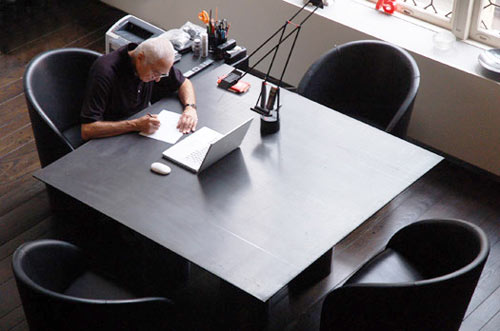
A 50-minute documentary on information visualization and its use in journalism.
Lots of kottke.org regulars in there…Fry, Wattenberg, Koblin, Felton, Stamen, etc. And Amanda Cox sounds like Sarah Vowell!
Dark Patterns are UI techniques designed to trick users into doing things they otherwise wouldn’t have done.
Normally when you think of “bad design”, you think of laziness or mistakes. These are known as design anti-patterns. Dark Patterns are different — they are not mistakes, they are carefully crafted with a solid understanding of human psychology, and they do not have the user’s interests in mind.
For instance, Privacy Zuckering is a dark pattern implemented by Facebook to get users to share more about themselves than they would like to. (thx, @tnorthcutt)
Want to see the state of the art in web design using web fonts and Typekit? Check out Lost World’s Fairs. It’s all good, but Frank Chimero really knocked it out of the park with the 1962 Atlantis World’s Fair. With HTML5 and web fonts, experimentation with web design seems open and fun again; reminds me of the 90s a bit.
Vote for your favorite magazine cover from the past year. Lots of nice work in there.
Designing Obama, a book chronicling how the visual branding of the Obama campaign came about, is available in several formats, most notably in a completely free online version. Written by the campaign’s design director, the making of the book was funded through the first big Kickstarter campaign.
A very nice US currency redesign by Dowling Duncan.
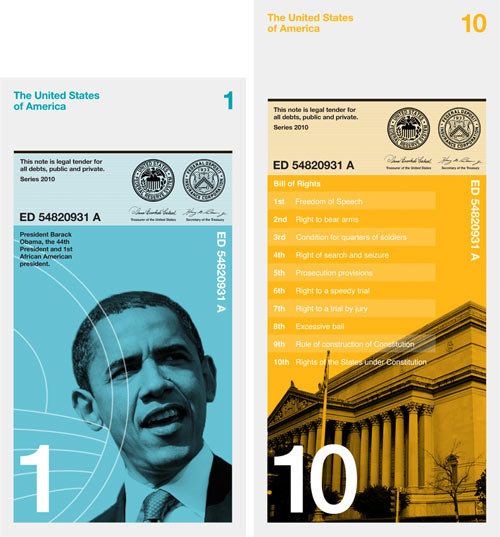
When we researched how notes are used we realized people tend to handle and deal with money vertically rather than horizontally. You tend to hold a wallet or purse vertically when searching for notes. The majority of people hand over notes vertically when making purchases. All machines accept notes vertically. Therefore a vertical note makes more sense.
The note imagery relates to the value of each note:
$1 - The first African American president
$5 - The five biggest native American tribes
$10 - The bill of rights, the first 10 amendments to the US Constitution
$20 - 20th Century America
$50 - The 50 States of America
$100 - The first 100 days of President Franklin Roosevelt.
Needs more guilloche but other than that: fire up the presses.
Nick Gleis shoots the interiors of corporate jets owned by African dictators and other heads of state. I couldn’t decide which jet interior was the gaudiest, but this one is definitely a contender because of the classy naked ladies on the wall of the bedroom.

Who knew that African dictators were so nostalgic for the set design of Star Trek: The Next Generation?
A look at how little the essential design of National Geographic magazine has changed since its introduction in 1888.
National Geographic’s front cover is a great example of how well simple branding can be tied to a product or message. In this case, the slightly warm yellow has become a symbol of wonderful photography, intriguing articles and serves as a doorway into places worlds away.
I have fond memories of Fleer’s otherwise forgettable 1991 set of baseball cards because of the yellow border…probably NatGeo spill-over.
…From the past. It doesn’t take much to look at this book and imagine the pitch meeting at how Sterling Cooper Draper Price would pitch this.

In 1964 United States Steel called upon the nation’s electric utility companies to reconsider the current look of our power stations and transmission towers to be both functional and beautiful. Two years later, Henry Dreyfuss and Associates were commissioned to investigate possible design alternatives, and I believe they were documented in a book entitled “Power Styling” which was produced by United States Steel in the mid-to-late 1960s.
(Thanks, Wendy!)
Kevin Kelly has a short Wired interview with Fred Brooks, author of the essential Mythical Man-Month and the new The Design of Design.
The next film in Gary Hustwit’s design trilogy (after Helvetica and Objectified) is Urbanized, an investigation of urban design.
Who is allowed to shape our cities, and how do they do it? Unlike many other fields of design, cities aren’t created by any one specialist or expert. There are many contributors to urban change, including ordinary citizens who can have a great impact improving the cities in which they live. By exploring a diverse range of urban design projects around the world, Urbanized will frame a global discussion on the future of cities.
Meant to post about this when it was announced: the Brand New Conference, Nov 5 in NYC.
The Brand New Conference is a one-day event organized by UnderConsideration, focusing on the practice of corporate and brand identity — a direct extension of the popular blog, Brand New. The conference consists of eight sessions offering a broad range of points of view with speakers from around the world practicing in different environments, from global consultancies, to in-house groups, to small firms.
Speakers include boldface names Michael Bierut, Paula Scher, and Erik Spiekermann. Surprisingly, tickets are still available.
The legendary Braun designer talks about his craft.
A design should not dominate people.
And hey, I didn’t know that a book had been published on Rams’ work. I bet Jony Ive has at least three copies. (via monoscope)
I love these minimalist Mad Men posters by Christina Perry.
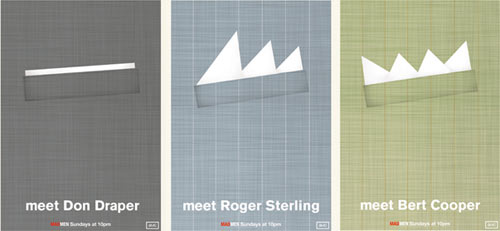
Prints are available. (via footnotes of mad men)
Artist and designer Tobias Wong killed himself last month. Or did he? Sleep can be a dangerous thing.
A really nice collection of prints** of collective nouns. This is a hush of librarians:
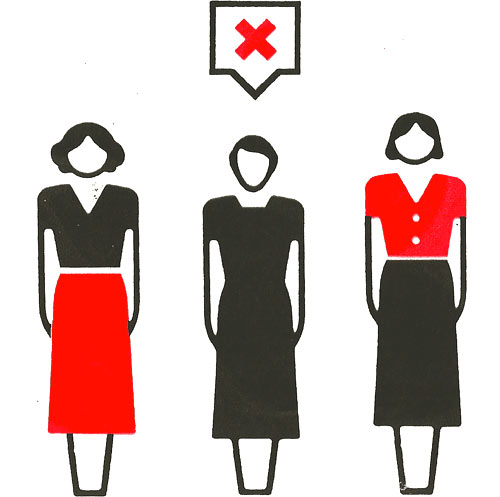
I also like the seemingly empty room of ninjas, but more for the term than the illustration. Several other great ones here, like:
a wunch of bankers
a deutschbag of nazis
a fixie of hipsters (coined here, actually)
a knot of string theorists
an array of geeks
**Wait, what’s the collective noun for prints? A charming of prints?
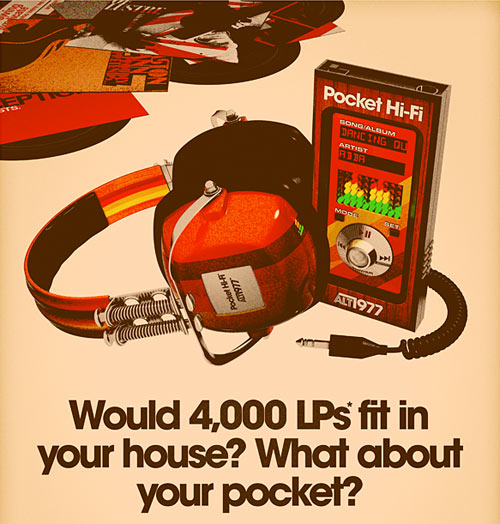
[I would] grab all the modern technology I could find, take it to the late 70’s, superficially redesign it all to blend in, start a consumer electronics company to unleash it upon the world, then sit back as I rake in billions, trillions, or even millions of dollars.
Fantastic. Much more here. (via df)
A lovely visual look at redesigning the map for the Moscow Metro. (thx, matt)
Peter Merholz says there should be a toddler mode for the iPad (and probably iPhone as well).
You know how iPhone and iPad have “airplane mode”, which turns off all connectivity? Right under that, I want “Toddler Mode”. When switched on, you’ll get a dialog letting you know you are entering Toddler Mode, and an explanation of how to get out. Unlike Airplane Mode, you can’t get out of Toddler Mode through settings, because there’s no way Toddler Mode should allow access to the settings panel. I haven’t figured out the best way out of Toddler Mode, but I’m thinking a quick triple-click on the home button, followed by a swipe, should work.
The problem with toddler mode is that the capabilities of kids change very quickly at that age. For instance, the home button is only a problem for a short time. My almost-3-yo son Ollie pretty quickly figured out that if he wanted to keep doing what he was doing, he had to lay off the home button. Now he knows exactly what it does: gets him back to the screen where he can pick a new activity. He also has no problem finding his apps…he knows exactly which of those icons mean fun and which do not.
(BTW, if you’re an interface/interaction designer and you haven’t watched a preschooler using a touchscreen device, you really should. It’s fascinating how quickly they learn some things and just can’t get the hang of other things. It’s a really eye-opening experience.)
If you’ve ever wanted to live in a rolling house that doesn’t take up much space and even has space on the outside for advertising, get thee to the U of Karlsruhe (non-German link here).
This cyclindrical design is a modular protype that provides flexible space within a minimum housing unit. Three different sections are dedicated to different functional needs: there’s a bed and table in section, an exercise cylinder, and a kitchen with a sink.
Yulia Brodskaya makes elaborate typographic creations entirely out of paper. She calls them PAPERgraphics.
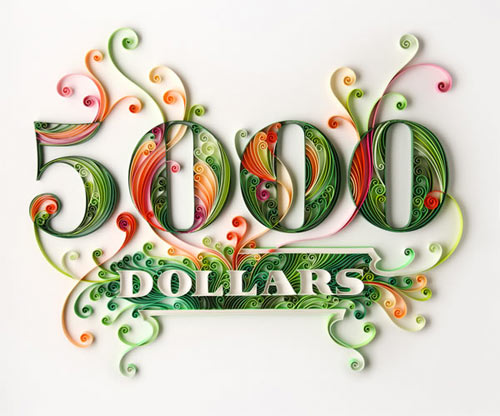
This is like Si Scott in 3-D.
IANAHRSYMMV**, but here are some well-known English language logos redesigned and translated into Hebrew language logos. Nice student work from a class taught by Oded Ezer.
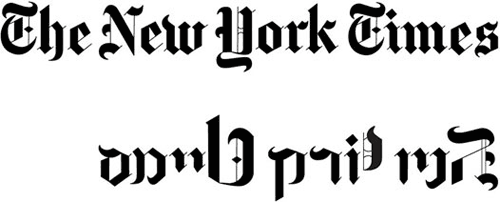
** I am a not a Hebrew reader so your mileage may vary.
Stay Connected